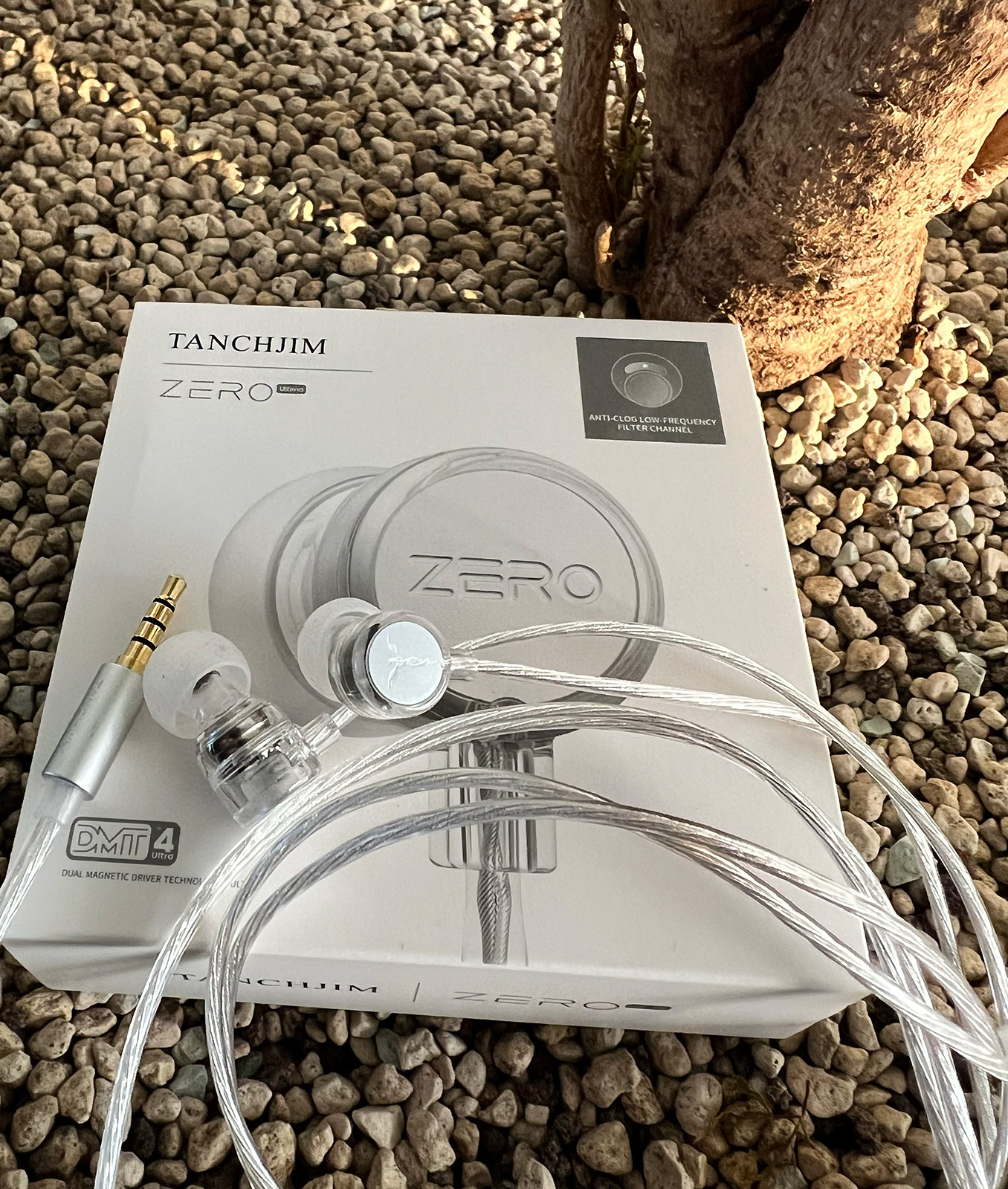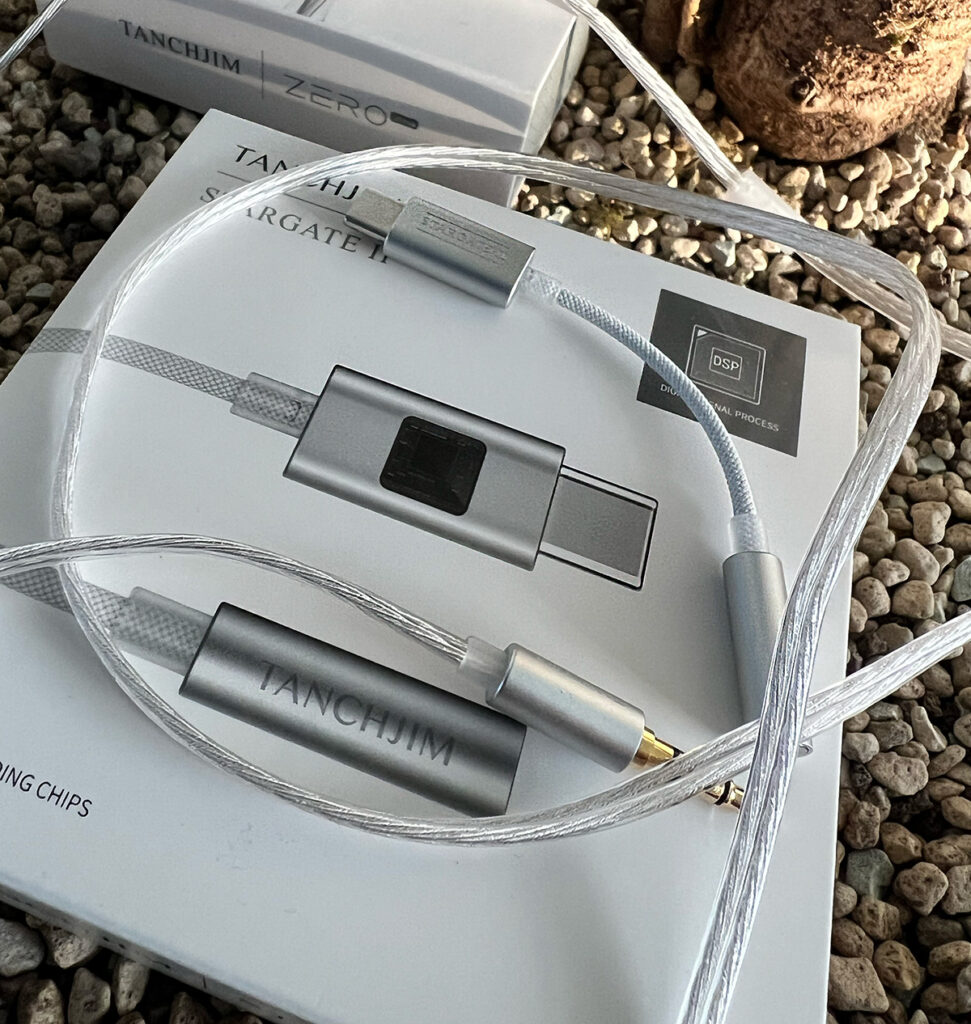Review Tanchjim Zero & Stargate II
When it comes to audiophile brands, the expensive brands often dominate the conversation. Every so often, a smaller player quietly steals the spotlight. One of those brands is Tanchjim. Born from the vibrant Chinese audio scene, Tanchjim has carved out a loyal following by doing something few manage: delivering genuinely musical and refined sound on a budget.
Make no mistake, this is not a luxury brand flaunting milled aluminum housings or exotic driver arrays. Tanchjim is unapologetically focused on budget-conscious audio, yet manages to achieve a level of musicality and finesse that (also in my case) surprises even seasoned listeners.
Let’s be honest, in the audiophile world, there are always those who refuse to even give budget gear a fair shot. Some won’t grant it the courtesy of a listen or even a look, convinced that good sound must come with a hefty price tag. But those willing to approach Tanchjim with open ears will quickly discover that music doesn’t care about price. It either moves you, or it doesn’t.
In this review, we will take a closer look at two of Tanchjim’s new budget offerings: the Tanchjim Zero, an ultra-affordable in-ear monitor aiming for sonic precision, and the Tanchjim Stargate II, a compact USB DAC. Both products reflect Tanchjim’s philosophy music first, price second.

The Tanchjim Zero is a budget-friendly in-ear monitor (IEM) that has garnered attention for its neutral tuning and impressive technical performance, especially given its modest price point of around $16 USD. Designed with musicality not the bass happy few in mind, the Zero aims to deliver a balanced and accurate sound signature without breaking the bank.
Test equipment for this test:
– Chord Mojo2 + Poly
– Tanchjim Stargate II (for the Tanchim Zero ofcourse)
– MacBook Pro 2024
Tested Tracks:
Melody Gardot – Morning Sung
Sinne Eeg – Unpredictable Love
Big Phat Band – Hit The Ground Running
Catherine Russel – Talk to Me
Michel Camilo – Suite Sandrine Pt 3
Unboxing and Accessories
Upon opening the compact packaging, users are greeted with a selection of (expected) accessories. The package includes a carrying pouch, three sets of wide-bore silicone eartips (S, M, L), and three sets of narrow-bore silicone eartips (S, M, L), allowing for a customizable fit.
The inclusion of multiple eartip options ensures that listeners can achieve optimal comfort and sound quality. However, it’s worth noting that the Zero comes with a non-detachable cable, which in this price range is not a weird choice, buying a new one is cheaper than a seperate cable.
Design and Comfort
The Tanchjim Zero features a minimalist design with clear shells that house a 10mm composite diaphragm dynamic driver. The lightweight and small form factor contribute to a comfortable fit, making them suitable for extended listening sessions.
Sound Quality
The Zero’s sound signature can be described as neutral with a slight emphasis on the upper mids and treble regions.This tuning approach results in a clean and detailed presentation that appeals to listeners who prefer accuracy over coloration.
I also tested these IEM’s on the Chord Mojo2 + Poly, and to my surprise, the Zero scaled nicely, I actually listened to the Zero, writing this review…. that should say enough (I am very sensitive to listeners fatique)
Bass
The bass response is lean and actually quite precise, focusing on accuracy rather than quantity. While it may lack the depth and impact desired by bass enthusiasts, the zero delivers a clean low-end that complements its overall neutral profile. For people like me that prefer neutrality above all, no bloated bassline, it is actually very nice.
You need to get a decent fit though. Like most IEM’s, choose the right eartip, to get a decent bass. Otherwise like some (I read) misjudge the neutral signature of the Tanchjim Zero missing low end bass. This is by no means a Bass happy iem (and that is a GOOD quality!) In fact the Zero has a clean and actually REAL audiophile neutrality in the sound signature. It actually surprised me, because jazz sounds very nice on these, without anything sounded bloated and no overpowering bass..
Midrange
The midrange is clear and flat, providing a natural reproduction of vocals and instruments. The upper midrange is slightly forward, which enhances the presence of female vocals and certain instruments without introducing harshness.
Treble
The treble is lively and engaging, offering a good level of detail without becoming sibilant or fatiguing. This contributes to the overall sense of clarity and openness in the sound.
Technical Performance
Despite its budget-friendly price, the Tanchjim Zero exhibits commendable technical performance. The soundstage is notably wide for its class, providing a sense of space and air, Instrument separation and imaging are unheard of in this price.
The bass details are not the highest class, or the most smooth sounding, but can you really expect flagship performance? I don’t think that’s fair. Getting a pleasent sounding in-ear like this, in this low price range, I already would call quite an achievement to begin with!
Pros
– Excellent neutral and balanced tuning
– Clear and well-separated mids and highs
– Surprisingly detailed for the extreme low pricetag
– Comfortable fit for most users
– Good technical performance (soundstage, imaging) for its class
Cons
– Fixed cable (but in this pricerange, thats to expect)
– Bass may feel a bit lean for bass enthusiasts

Tanchjim Stargate II
The portable DAC market is packed with options nowadays, yet every once in a while, a product surfaces that makes you do a double-take, not because of bold claims or gimmicks, but because of how effortlessly it balances price, usability, and sound quality. The Tanchjim Stargate II is exactly that kind of product. It even supports a PEQ config through their application.
Specs:
– Decoding support | PCM384kHz/32Bit DSD64/128/256
– Total Harmonic Distortion | 0.00023%
– Dynamic Range | 127.4dB
– Signal-to-Noise Ratio | 127.4dB
– Signal-to-Noise and Distortion Ratio | 113dB
– Output level: 2Vrms
– Crosstalk |-75dB
– Power Output | 82mW@16Q<THD+N 1%
– 75mW@32Q<THD+N 1%
Build & Design
Right out of the box, the Stargate II is all about simplicity. The DAC is lightweight, sleek, and finished in a tasteful matte aluminum. Its compact form factor and soft braided cable, you almost forget it’s there until you plug it in. It terminates in a USB-C connector and offers a standard 3.5mm single-ended output, keeping things fuss-free. For the price, it feels more premium than expected. No RGB lights, no futuristic gimmicks, just purposeful design, with a little nice feature, a window to see the dac chip.
Features & Tech
Inside the modest shell lies a Cirrus Logic CS43131 DAC chip, capable of decoding up to 32-bit / 384kHz PCM and DSD256. Not bad for a DAC that costs less than a fancy diner. Output power is around 75mW @ 32Ω, enough to comfortably drive most IEMs and even some portable-friendly headphones. Don’t go crazy now, plugin in flagship full sized headphones, they may produce sound, but everyone on their right mind, knows this mini dac is not intended for that.
One of the standout features is its (sadly) Android-only companion app, which offers a fully adjustable 8-band Parametric EQ and a dedicated gaming mode that tweaks spatial cues. While it’s unfortunate that iOS users are left out, Android users will appreciate the extra tuning flexibility without relying on external DSP solutions.
Sound Impressions
Tanchjim clearly took the “clean and musical” route with the Stargate II. It delivers a neutral presentation with a slight touch of warmth, steering clear of the dry or sterile signature some budget DACs suffer from.
Bass
Is tight and controlled, not overpowering, but present enough to add weight when called for. It’s not a bass-head DAC, but it has definition and texture.
Mids
Comes through clean, natural, and uncolored. Vocals sound organic, neither pushed nor recessed, making the Stargate II surprisingly competent for vocal-heavy genres and acoustic music.
Treble
Is smooth but detailed. There’s enough sparkle to keep things lively without triggering sibilance or fatigue, even with brighter IEMs.
The soundstage is slightly wider than you’d expect for such a tiny DAC. Instrument separation is excellent for its class. It’s not the deepest or most holographic presentation, but it’s more than respectable.
Technical performance
Yes, it’s still a budget DAC, and no, it’s not going to dethrone desktop-class gear. However, for casual listening, on-the-go use, or as a daily driver for your phone or laptop, the Stargate II nails the essentials.
Note: It also plays well with microphones, so you won’t lose voice chat functionality when gaming or taking calls.
Some will criticize the Android-only app, the single-ended output, or the fact that it won’t drive power-hungry headphones, but that’s totally missing the point. This is a budget-friendly, music-first device that prioritizes good sound for a reasonable price, even my flagship IEM’s I own, sounded fine and musical with the Stargate II.
The Tanchjim Stargate II is a perfect example of a “affordable, but good” product. It doesn’t try to be something it’s not. Instead, it focuses on delivering musicality, decent power, and tuning options at a price that makes it hard to ignore.
If you’re looking for an ultra-portable DAC for everyday listening, and you’re not running 300-ohm beasts, this little device might just surprise you.
Pros
– Neutral and slightly warm sound, smooth and detailed
– Cirrus Logic CS43131 chip delivers clean high-res playback
– Supports PCM up to 32-bit/384kHz and DSD256
– Compact, lightweight, and stylish
– Android app with parametric EQ and gaming mode
– Plug & play without extra drivers on most systems
Cons
– Android-only app (no iOS support)
– Limited power output for demanding headphones

The Tanchjim Stargate II can even be configured with a PEQ, a nice extra

Final Thoughts
Individually, both the Tanchjim Zero and Stargate II show that Tanchjim knows exactly how to make budget products that sound anything but cheap. Together, however, they form a budget-friendly chain that delivers a surprisingly refined and musical listening experience. And altough I am used to very expensive flagship IEM’s and DAC’s, I enjoyed listening to music on them both, while writing this review.
The Zero offers an impressively neutral and balanced tuning, with excellent clarity and separation that rivals IEMs far above its price point (I mean 16USD less expensive than a average fastfood meal). Paired with the Stargate II, the synergy becomes clear: the DAC enhances the Zero’s already impressive resolution, gives it just a touch more openness, and smooths out the listening experience without sacrificing detail.
Besides that, trying the Zero in a highend Mojo2+Poly, showed the Zero could give more than that.
Sure, neither product will dethrone summit-fi gear, and some die-hard audiophiles might scoff at the idea of great sound for less than the price of a single premium cable. But those who give this combo a fair listen will quickly realize that music is what matters, not the price tag.
For anyone looking for an affordable yet truly nice sounding portable setup, the Stargate II and Zero combination is a reminder that great sound doesn’t always come wrapped in luxury packaging. In this particular situation the packaging is very stylish. Sometimes, it just sounds right.

